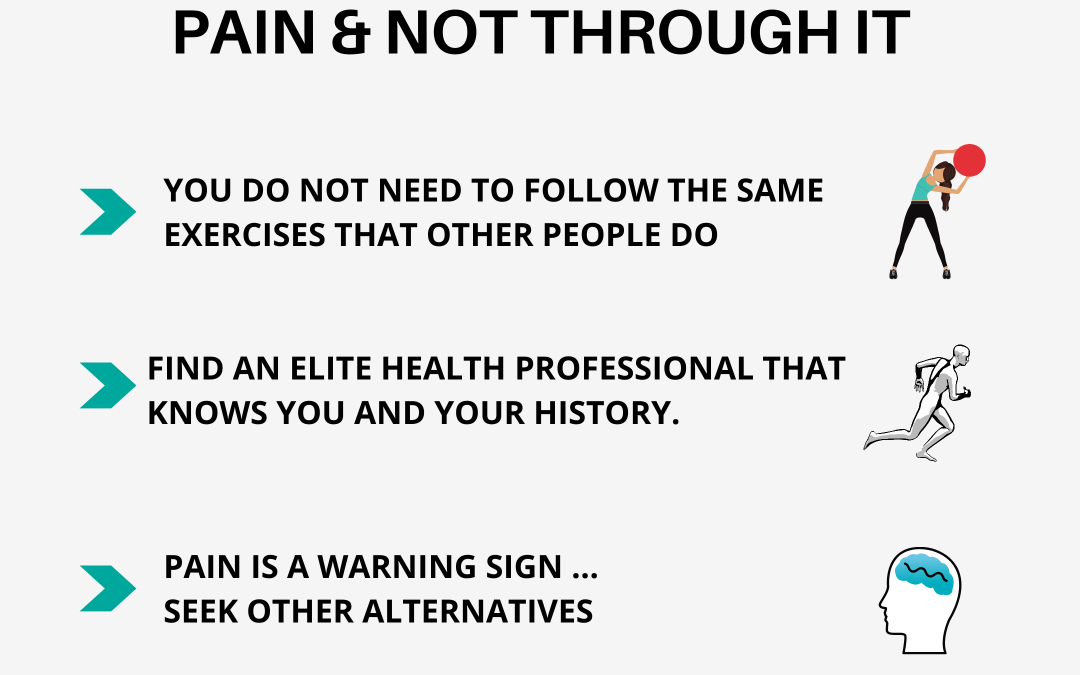If you were to speak with any esteemed health professional who is a rehabilitation expert – I assure you they would say that you can always work around pain.
Injuries should always be classified as a speed hump and not a stop sign!
Too often we see people loose the appetite to train because an injury puts a psychological sleeper hold on their motivation. Instead of thinking; “I just need to rest to let this heal”, it should be the opposite; “How can I train the muscles around this injury or how can I strengthen the affected muscle, tendon & ligament to get it stronger than ever?”
For anyone else that is an avid fitness fanatic and contact sport participant – it is INEVITABLE that you will get injured at some point. Our bodies are not this idealistic, unstoppable mechanical machine that will never breakdown – it just does not happen.
If you keep pushing and pushing you will break down – and break down quickly.
Just like training sessions, nutrition plans, sleep and recovery methods, injuries are a part of the game! If you can gauge an understanding as to how an injury came about – then you will learn something new about your body.
This is the psychological benefit that injuries can have – you can learn more about your body and it’s capabilities – it can be a huge positive!
Do not view injuries as set backs, but rather steps forward toward uncovering what suits your body best!!!
Throughout my time in managing injuries both personally and as a a coach there are a couple of small things I have learnt:
1. You do not have to do all the same exercises that everyone else does.
2. Find an elite health professional that understands you, your history and that genuinely cares.
3. Pain is a warning sign to a number of things going wrong in what should be your well balanced life.
1. Challenge the status quo:
Too often I have worked with clients (and myself during my younger years) and when I have asked the question, ‘Do you get any pain during that?”, they bravely and heroically respond – just a little bit but I will be right.
NO YOU IDIOT – STOP!
This is not brave nor heroic, there is an underlying issue – it may be your joint structure, the biomechanics involved in the movement, a pre-existing injury or an injury evolving. Stop being a hero and doing exercises that do not suit you. Choose the exercises that you like, you feel you get the most out of and that are pain – free! Everyone is structured differently and just because Joe Blow can deadlift 200KGs doesn’t mean that you need to do that. No one judges you for not wanting to do an exercise – period.
2. Your encyclopaedia, your counsellor and your friend – find an elite health professional.
If you ever have a health professional that prescribes you to completely rest for an extended period of time, pay your bill and never ever return there.
Wow the list of health professionals is extensive – who is better? The Physio, the Chiro, the Osteo, the Myo, the Exercise Physiologist, …
The answer is it depends on you, the benefits that you receive and the value you get from working with this individual – it really depends on the individual. Obviously there are certain acute or chronic injuries that constitute certain practices more specifically but really – in my opinion it comes back to 3 things:
They understand you, they know your history and they care.
It obviously helps that they have experience and are up to date with the most recent research too! Other tips: Find allocated health professionals that have worked in the specific sport as them – although they all follow similar pathways with rehab it is easier to understand the sports demands & systems.
LASTLY IF YOU HAVE NOT FOLLOWED THE EXACT PROGRAM THAT THE HEALTH PROFESSIONAL HAS GIVEN YOU THEN PLEASE DO NOT EVER SAY, “ THAT PHYSIO/MYO/ OSTEO DID NOT WORK FOR ME…..” Look in the mirror and take extreme ownership of our own actions!!!
3. Seek alternative options
When you approach a hazard on the road driving what do you do? You swerve, you go over it, you slow down but you do not stop – it is not a stop sign! I repeat – it is NOT a stop sign!
If you have an upper body injury – start using your legs.
If you have been told to avoid explosive or plyometrics – get involved in some stationary cardio.
If you aren’t allowed to weight bear – try swimming, boxing or an upper body session.
The list goes on and you get the idea. Never stop, train smarter and work around it.
Lastly PAIN = ALARM BELLS!!!!! Do not train through pain. For those who experience chronic pain their a many psychological aids you can use to help manage this but I guarantee the advice majority of these will give… MOVE and MOVE OFTEN – within your capabilities. Stay healthy & happy during this time.
In good health,
Dan Maitland

